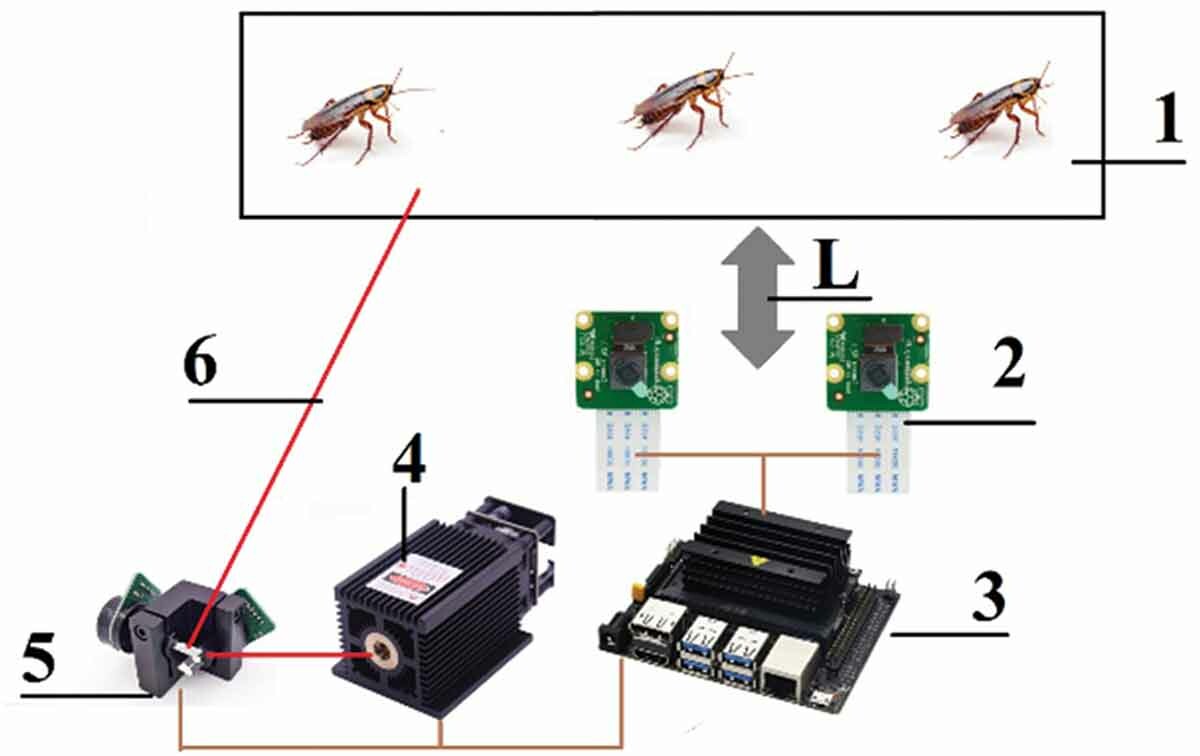Everyone wants to be able to just zap a bug and have it go away. But now, thanks to a recent development from Ildar Rakhmatulin, a research associate at Heriot-Watt University interested in machine learning and engineering, this dream is now a reality.
In the study—which was conducted last year but published in Oriental Insects last week—Rakhmatulin and his co-authors used a laser insect control device automated with machine vision to perform a series of experiments on domiciliary cockroaches. They were able to not only detect cockroaches at high accuracy but also neutralize and deter individual insects at a distance up to 1.2 meters.
Videos by VICE
This is a follow-up of sorts to earlier projects, in which he used a Raspberry Pi and lasers to zap mosquitoes. However, for this project, Rakhmatulin used a different kind of computer which allowed for more precision in detecting the bug.
“I started using a Jetson Nano that allowed me to use deep learning technologies with higher accuracy to detect an object,” Rakhmatulin explained. The Jetson Nano is a small computer that can run machine learning algorithms. The computer processes a digital signal from two cameras to determine the cockroach’s position. It transmits that information to a galvanometer (a machine that measures electric current), which changes the direction of the laser to shoot the target.

According to the paper, Rakhmatulin tried this configuration at different power levels for the laser. At a lower power level, he found that he could influence the behavior of roaches by simply triggering their flight response with a laser; this way, they could potentially be trained to not shelter in a particular dark area. At a higher power level, the cockroaches were effectively “neutralised,” in the paper’s language—in other words, killed.
Rakhmatulin has also made all the data and instructions freely available, noting that others can try as long as they take proper precautions.
“I use very cheap hardware and cheap technology and it’s open source,” Rakhmatulin said. “All sources are uploaded in my GitHub and see how to do it and use it.” He mentioned that others have already started trying it out with other pests like hornets, which makes sense. “If it can damage cockroaches, it can also damage other pests in agriculture.”
Aside from the open-sourced nature of the project, the possible widespread applications of the technology also makes it noteworthy. It could be a plausible alternative to mechanical traps, as well as chemicals that often damage the environment and target non-pest insect species. Not to mention, it’s cheaper (the paper notes that all devices cost not more than $250) and more compact than other current pest-controlling technologies.
Sign up for Motherboard’s daily newsletter for a regular dose of our original reporting, plus behind-the-scenes content about our biggest stories.
That being said, although the prototype is suitable for academic research, there’s a lot more to be done before it can be deployed on a larger scale. For example, the paper notes that a smaller laser point would be more effective at killing the roaches but is difficult to implement experimentally. The ability to precisely control which parts of the cockroach’s bodies were hit would also be helpful, the paper says.
It’s also sadly not quite ready for household use, at least not yet. “It’s not recommended because it’s a little dangerous,” Rakhmatulin said. “Lasers can damage not only cockroaches but your eyes.”
Best to keep your cockroach traps for now.
More
From VICE
-

Screenshot: X @FF_XIV_EN, Square Enix -

WC Fields (Photo by Universal/Getty Images) -

(Photo by Scott Dudelson/Getty Images) -

Photo by Fight For The Future
